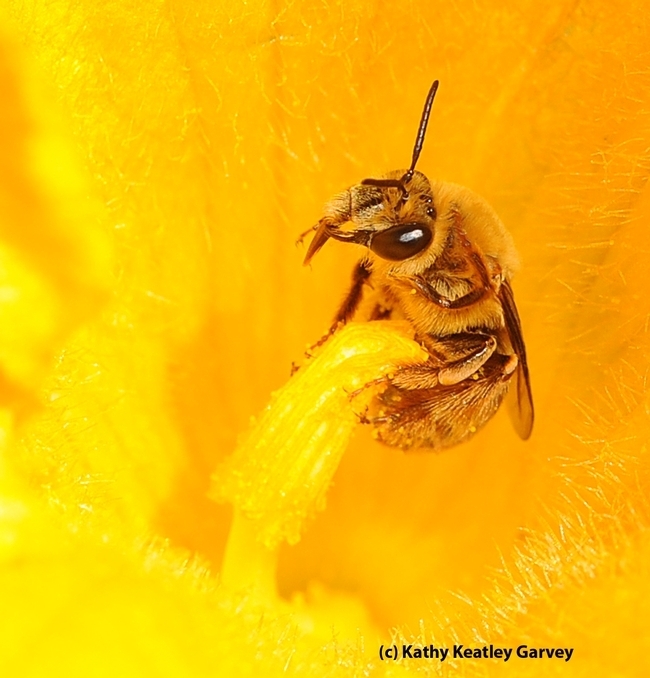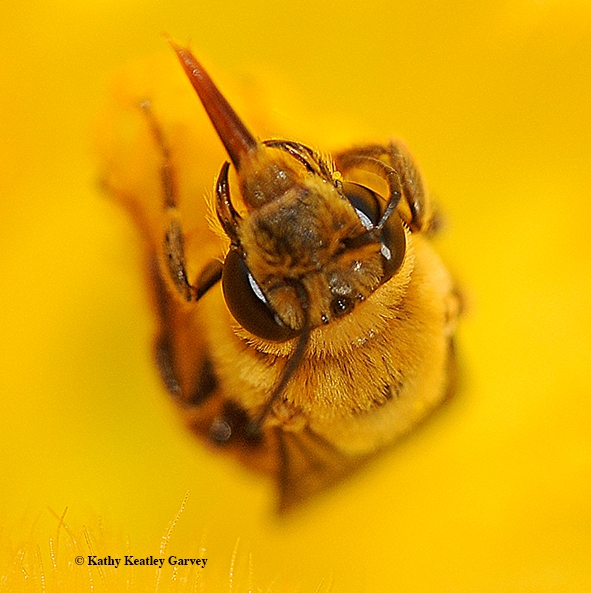If you're having pumpkin pie or butternut squash this Thanksgiving, thank the squash bee.
Squash bees are specialists (not generalists) that pollinate only the cucurbits or squash family, Cucurbitaceae, which includes pumpkins, squash, gourds, cucumbers and zucchini.
Last summer we saw dozens of Peponapis pruinosa pollinating our squash and cucumbers. Peponapis pruinosa is a species of solitary bee in the tribe Eucerini, the long-horned bees.
"Isn't that a honey bee?" a friend asked.
"No, it's a squash bee; it's smaller than the honey bee."
"Never heard of it."
Other factoids, as shared with us by the late Robbin Thorp, distinguished emeritus professor of entomology at UC Davis:.
- Both the males and females are golden brown with a fuzzy yellow thorax. The males have a yellow spot on their face.
- Males sleep in the blossoms at night. There they wait for the females to arrive.
- Squash bees are early risers (they rise before the sun does). They begin pollinating the blossoms as soon as they open in the morning. Other bee species, such as honey bees, don't visit the flowers so early. The squash blossoms close after several hours so there's a limited amount of pollination time.
If you're aiming to photograph them, get there early. If you don't, you will find the blossoms closing.
Attached Images:

